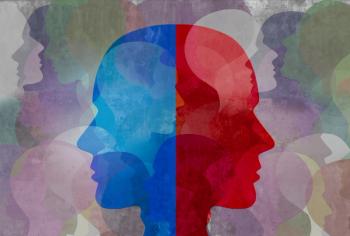
- Psychiatric Times Vol 35, Issue 10
- Volume 35
- Issue 10
Mania Linked to Beef Jerky: Hot Dogs and Bacon May Be Next
A 10-year study of over a thousand patients finds that nitrate-cured meats may play a causative role in mania. Hot dogs and bacon may be next.
RESEARCH UPDATE
Dr Aiken is Instructor in Clinical Psychiatry at the Wake Forest University School of Medicine and the Director of the
New Study Finds That Nitrate-Cured Meats May Play a Causative Role in Mania
Nitrate-cured meats may increase the risk of mania, according to a
The finding was striking, with a large odds ratio of 3.5. It surprised the research team, who set out to investigate the relationship between diet and psychiatric illness at the Sheppard Pratt Health System. Their cohort of 1101 subjects included patients with bipolar mania, bipolar depression, unipolar depression, schizophrenia, schizoaffective disorder, and normal controls. Midway through the 10-year study, they noticed a sharp spike of dry cured meats among the patients hospitalized for mania. Other psychiatric illnesses did not show this association, and the finding held up after controlling for age, gender, race, current cigarette smoking, body mass index, socioeconomic status, and multiple statistical comparisons.
To further test that association with a controlled design, they added a series of animal studies in collaboration with the Nutrition Department at Purdue University. Compared with a standard diet, beef jerky increased manic behavior in rats, as measured by increased locomotor and novelty-seeking behavior. Additional experiments suggested that nitrates were part of the problem. Adding nitrates to the standard diet also increased manic behavior, although to a lesser degree than the beef jerky. When fed dried beef that was free of nitrates, the rats showed no increase in mania.
Mechanisms
How can dietary nitrates trigger mania? Nitric oxide is one possibility. This gas rises with nitrate consumption and is increased in patients with bipolar disorder. Post-mortem analysis of the rat brains found alterations in brain regions that interact with nitric oxide: serotonin receptor signaling, nuclear factor (NF)-κB signaling, bacterial pattern recognition, and sphingosine-1-phosphate signaling. With the exception of sphingosine, each of those pathways has been linked to mania in human studies.
Another hypothesis is that the nitrate-rich foods alter the gut flora in ways that elevate the risk of mania. That may sound far-fetched, but it’s supported by basic science-the mind-gut connection-as well as by a recent controlled study (from the same Sheppard Pratt group) that found significant preventative benefits with
Another side of nitrates
It’s unlikely that nitrates are the sole cause of this association. In the typical diet, 80% of nitrates come from vegetables like spinach, beets, and celery, foods that confer both physical and mental benefits. Only 5% to 10% is derived from nitrate-cured meats.3 Nitrates act differently in cured meats, where they combine with amines to form nitrosamines. Nitrosamines are thought to be responsible for other health risks that are associated with nitrate-cured meats, such as cancer, asthma, and chronic obstructive pulmonary disease.4
The bottom line
Although the human data in this study is associational, the animal data adds controlled confirmation and a plausible biological mechanism. What’s missing is replication, an important step with novel findings. Pending that, there is little harm in recommending that bipolar patients limit their consumption of processed meats, particularly beef sticks and jerky. Last year, two controlled studies found that a
What about hot dogs, bacon, sausage, pepperoni, and nitrate-cured fish? The study casts doubt on the safety of these nitrate-cured meats, although it did not examine them specifically. It did look at salami, which is often nitrate-cured, and found no risk there or with prosciutto, which is not made with nitrates. One word of caution for those wishing to avoid nitrates. The classification of nitrates as a
Erratum: This article incorrectly used the name of Johns Hopkins’ Sheppard Pratt hospital. The correct name is Sheppard Pratt Health System.
This article was originally published 7/31/18 and has since been updated.
Disclosures:
Dr Aiken does not accept honoraria from pharmaceutical companies but receives honoraria from W.W. Norton & Co. for a book he co-authored with James Phelps, MD,
References:
1. Khambadkone SG, Cordner ZA, Dickerson F, et al.
2. Dickerson F, Adamos M, Katsafanas E, et al.
3. BrkiÄ D, BoÅ¡nir J, Bevardi M, et al.
4. Song P, Wu L, Guan W.
5. Jacka FN, O’Neil A, Opie R, et al.
6. Parletta N, Zarnowiecki D, Cho J, et al.
7. Beyer JL, Payne ME.
8. Cook’s Illustrated, July 2010.
Articles in this issue
about 7 years ago
ADHD: A 24-Hour Disorderabout 7 years ago
ADHD, Bipolar Disorder, or Borderline Personality Disorderabout 7 years ago
ADHD Neuroimaging: What’s New?about 7 years ago
Memory’s Last Breath: Field Notes on My Dementiaabout 7 years ago
Digital Mental Health for Youth: New Evidence but Still Much Unknownabout 7 years ago
Prescribing Substances of Abuse in Psychiatric Careabout 7 years ago
Three New Studies in Major Depressionabout 7 years ago
Psychocardiology, Part 2: Fixing the Broken Heartabout 7 years ago
Calling in the ScriptNewsletter
Receive trusted psychiatric news, expert analysis, and clinical insights — subscribe today to support your practice and your patients.

















